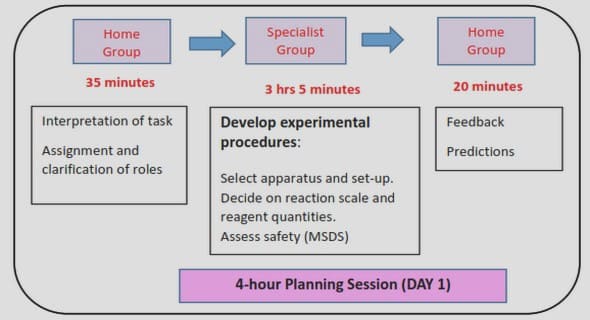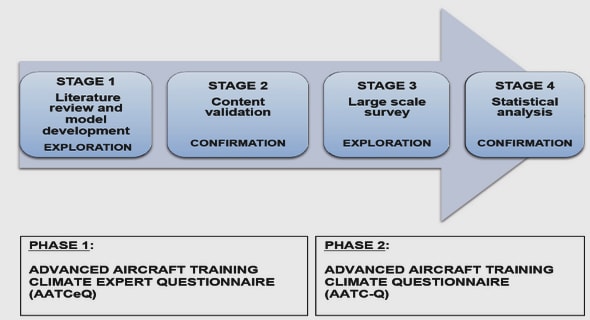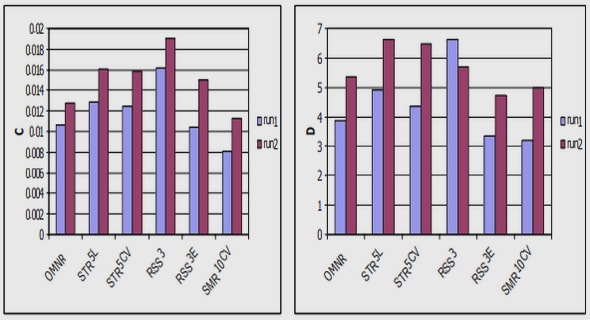Get Complete Project Material File(s) Now! »
CHAPTER 3 PLANNING AND PARTICIPATION FOR IN·MIGRATION
INTRODUCTION
The post-industrial world into which we have stumbled is filled with terrifying uncertainties. It is revealed that there is no longer surety of the course to be taken. The environment has become murky. The inefficiencies of centralism have become apparent to nearly everyone. Yet it is precisely under such conditions that some form of planning for in-migration is needed. There is no assurance that the spontaneous workings of the private and public economy will lead us into a world it would be called our own, and so it behooves us to rethink planning in terms of the conditions, understandings, and needs of our time (Kok and Gelderblom, 1994: 1-2).
In-migration in South Africa is at present a fairly worrying phenomenon for the government concerned. At this stage it is not possible to say that South Africa will not suffer the same fate as places such as Mexico City, Cairo, Lagos, Calcutta and Shanghai that are referred to as examples of in-migration. Purposeful action to try and prevent large-scale land invasions as well as the provision of adequate physical and social infrastructure over a long term can contribute towards obviating such a scenario. In this process environmental conditions should be thoroughly taken into account, and planning should be undertaken more proactively than reactively as is now the case. Otherwise, the effective and efficient management of in-migration will be threatened and this will lead to crime, unemployment, low quality of life and progress will be affected negatively.
The phrase planning for in-migration has particularly become a misnomer in a number of Third World Cities. In some of these cities it appears that planning has been lagging behind developments, partly as a result of futile attempts to order the development of the city in the past. Will the same apply to the South African city of the future? The argument in this chapter will indicate that it need not necessarily come to that, provided that certain basic principles such as equity, sustainability and viability are adhered to. The position is clear: South Africa will require sound planning and research to get through the current bottlenecks and policy transitions. A new kind of urban planning and urban policy framework is therefore needed. Such a framework will have to satisfy a number of criteria. These are the following:
It must firstly be able to reach a decision to do mobilization from below. Given the level of mobilisation in communities, it seems unlikely that even a democratically elected government will be able to re-impose its will in any absolute way. Any attempt to plan in the traditional top down style of the apartheid past is unrealistic and therefore bound to fall. It is also morally unacceptable. Community involvement in planning will have to move beyond the lip service that has been paid to it in the past. At the same time such a revamped planning framework must develop the ability to mediate between interest groups. This refers in the first place to corrfiicts between vested interests such as middle-class property owners on the one hand and inhabitants of informal settlements on the other, that is, between the powerful and the powerless. In such a case planning procedures will have to be worked out that give serious consideration to the interests of the powerless. Romanticised conceptions of the community as if it is something that always acts with a unified will, should be guarded against.
There are also some technical criteria, such an urban policy framework will have to satisfy. It should be able to encourage a more compact urban form, thus as well as the need for transport subsidies. It should be affordable, satisfying the burgeoning need for shelter and services. The mobility of people should be facilitated as much as possible, thus enabling them to move to areas of greater opportunity. Finally such a policy will have to be able to address the inequality of life opportunities between classes and between regions.
It will clearly not be easy to formulate a policy that can satisfy these requirements. The heritage of past policies and the lack of funds for development impose strict constraints on our ability to implement new policies satisfactorily. The discussions that follow are an attempt to explore ways to overcome these constraints, yet satisfy these criteria.
PLANNING AND LOCAL GOVERNMENT
Well functioning local governments in informal settlements, for example, are necessary if the violence in the country is to stop. The problem of violence cannot be solved only at the provincial and national level. Conflict at the local level is mostly about local resources and not necessarily only about national politics. This means that we have to give some attention to the link between local government and planning in South Africa.
Wren (1980a:148) states that it is undesirable to be dogmatic about the question as to whether the emphasis should be placed on either central or local levels of government, but then goes on to say that the responsibility for achieving development objectives should rather rest with first or second-tier governments. This is the area of government which has no contact with and feeling for the people, because they can not easily identify the problems encountered by their constituencies and be able to resolve them easily and faster, to the satisfaction of all.
The term « development objectives » used by Wren (Supra, 1980a) is probably too vague for our purpose. The level of responsibility surely depends on the specific objective to be realized. For example, the provision of electricity and water requires a large economy so that national or provincial utility companies such as Eskom and the Rand Water Board will be able to provide the services; while the upgrading of internal roads and streets probably fits in better with local governments. It is further doubted whether Wren’s quote necessarily applies to the main local governments of large cities such as Pretoria, Johannesburg, Durban and Cape Town. It is possible therefore, that Wren’s conclusions reflect a generalization that does not take into account the potential roles of some local governments in the planning process.
It is proposed that, in spite of the fact that local governments are not necessarily closer to the grassroots, they have the potential to be the most responsive in terms of community interests. This may be ascribed partly to the fact that local govemment officials live in the community itself and should therefore be more accessible. National government tends to be influenced by strong lobbies where ordinary citizens have no say because they are not present in the capital city. Local govemment therefore has an important role to play in the planning for in-migration. The local government officials should not only be visible during election periods but even after elections so that they can uncover the people’s problems and to eliminate confusion and frustration the people experience.
LOCAL GOVERNMENT IN AN INFORMAL SETTLEMENT
In South Africa the development of informal settlements is likewise subordinate to the political process. Before the scrapping of influx control, squatter settlements were simply bulldozed. Although some categories of Africans did have the right to be present in the urban areas, most were tolerated there as long as they were gainfully employed. Squatters in South Africa according to Cole (1987:15) had to conduct intense political struggles in order to win the right to settle in the urban areas. The most famous such struggles were probably those of the people of Crossroads near Cape Town and Alexandra in Johannesburg. Since the scrapping of influx control in 1986 there has been, in principle, no legal obstacle to settle in the urban areas, but that, unfortunately, may be that the situation is merely transformed to one reminiscent of Latin America. The right of squatters to live in certain areas such as Diepsloot to the north of Johannesburg, certainly seems to be highly contestable. Leadership position in squatter settlements often seem to be usurped by self appointed leaders. Examples are Johnson Ngxobong-wana in Crossroads (Cole 1987) and David Ntombela near Durban in KwaZulu Natal (Minnaar 1992).
Free-standing informal settlements are sometimes the personal power bases of individual strongmen, often referred to as squatter leaders. These squatter leaders run their settlements along highly autocratic lines, allocating sites and securing services in return for rent and allegiance from the inhabitants. They often run private armies with which they maintain discipline and enforce their power, and sometimes mobilize the community for specific political purposes.
From the viewpoint of supplying basic services, the squatter leaders might be seen to facilitate informal settlement. But the cost in terms of insecurity, dependence and exploitation is often high (Minnaar, 1992:29). Relevant examples are those of Jeff’s squatter camp in Saulsville, Mushengu squatter camp in Mamelodi, Gee Gee squatter camp in Soshanguve and Pholapark in Thembisa.
In South Africa the leadership of these self appointed leaders often also assumes quasi-traditional forms (Phillips & Swilling 1988:41), with some authority delegated to headmen appOinted by the self appointed leader. The right to acquire land in an informal settlement is also subordinate to the acceptance of the political authority of the self appointed leader, which is similar to the situation in tribal tenure areas. Some informal settlements are located in areas of tribal tenure, in which case the leadership would naturally assume a traditional form. Informal taxes also have to be paid to the self appOinted leader which are often not accounted for (Philips & Cf. 1988:41 & 72; Cole, 1987:69,84&110) and often seem to be nothing but an avenue for the enrichment of the leadership.
The establishment of a new system of local government in these settlements is another priority. Such a system must be as open and accountable as possible. Although it is furthermore probably impossible to remove national politics altogether from the local arena, local political outcomes and the effectiveness of local decision-making, should depend as little as possible on national politics. Local leaders should consequently be able to bargain on behalf of their communities without becoming involved in national patronage networks. To this end possible future roles of civic organizations in local government should be investigated (Philips Silling 1988, cf. Shubane & Madiba 1992).
CHAPTER 1 BACKGROUND, AIMS AND METHODOLOGY OF THE RESEARCH
1.1 INTRODUCTION
1.2 AIMS AND OB ..IECTIVES OF THE STUDY
1.3 METHODOLOGY TO BE USED
1.4 PROBLEM FORMULATION
1.5 HYPOTHESIS
1.6 DEMARCATION OF THE FIELD OF STUDY
1.7 TITLE AND CONCEPT CLARIFICATION
1.8 STRUCTURE OF THE REPORT
CHAPTER 2 HISTORICAL BACKGROUND OF IN-MIGRATION IN SOUTH AFRICA
2.1 INTRODUCTION
2.2 DEVELOPMENT OF SPATIAL SETTLEMENT PATTERNS AND IN-MIGRATION TRENDS IN SOUTH AFRICA
2.3 MANAGING IN-MIGRATION FOR THE SATISFACTION OF BASIC HUMAN NEEDS
2.4 IN-MIGRATION IN SOUTH AFRICA
2.5 CONCLUSION
CHAPTER 3 PLANNING AND PARTICIPATION FOR IN-MIGRATION
3.1 INTRODUCTION
3.2 PLANNING AND LOCAL GOVERNMENT
3.3 LOCAL GOVERNMENT IN AN INFORMAL SETTLEMENT
3.4 ACCOMMODATING STRATEGIES OF IN-MIGRATION
3.5 PLANNING REQUIREMENTS AND PRINCIPLES
3.6 PLANNING AND PEOPLE’S PARTICIPATION
3.7 CONCLUSION
CHAPTER 4 IN-MIGRATION IN THE THIRD WORD
4.1 INTRODUCTION
4.2 URBAN AGGLOMERATION AND REGIONAL DISPARITIES
4.3 THE EXTENT OF IN-MIGRATION IN THE WORLD
4.4 TRENDS IN RURAL POPULATION GROWTH
4.5 CONCLUSION
CHAPTER 5 POLICIES, ECONOMIC AND SOCIAL FORCES AFFECTING INMIGRATION IN GAUTENG
5.1 INTRODUCTION
5.2 IMPLICIT POLICIES AND THE URBAN BIAS AS,FACTORS AFFECTING IN-MIGRATION
5.3 THE NEED FOR NATIONAL IN-MIGRATION POLICY
5.4 URBAN GROWTH AND THE FERTILITY TRANSITION
5.5 LINKAGES BETWEEN EFFICIENT SECTORAL POLICY AND SPATIAL OUTCOMES
5.6 TERRITORIAL ENTITLEMENTS
5.7 MANAGING CITY SIZE AND IN-MIGRATION
5.8 CONCLUSION
CHAPTER 6 POPULATION GROWTH AND IN-MIGRATION WITH SPECIAL REFERENCE TO ASIA
6.1 INTRODUCTION
6.2 TRENDS IN IN-MIGRATION, URBAN POPULATION GROWTH AND CITY SIZE
6.3 NATURAL INCREASE AND MIGRATION
6.4 PROJECTED TRENDS OF IN-MIGRATION
6.5 EVALUATION OF IN-MIGRATION THE PROJECTIONS
6.6 CITY POPULATION PROJECTIONS
6.7 DETERMINANTS OF IN-MIGRATION
6.8 SENSITIVITY OF URBAN TRENDS
6.9 A MULTILEVEL FRAMEWORK OF IN-MIGRATION
6.10 TRENDS IN ASIAN IN-MIGRATION
6.11 REGIONAL SPATIAL TRANSFORMATION IN ASIA
6.12 CONCLUSION
CHAPTER 7 IN-MIGRATION THEORIES AND MODELS
7.1 INTRODUCTION
7.2 RELATIONSHIP BETWEEN MIGRATION AND URBANISATION
7.3 THEORIES OF IN-MIGRATION
7.4 LESSONS LEARNT AND IMPORTANCE OF IN-MIGRATION THEORY
7.5 CONCULSION
CHAPTERS ANALYSIS AND INTERPRETATION OF SEVERAL FACTORS AFFECTING IN-MIGRATION IN SOUTH AFRICA
8.1 INTRODUCTION
8.2 THE LAND AREA OF SOUTH AFRICA
8.3 THE POPULATION OF SOUTH AFRICA
8.4 THE MANAGEMENT OF THE IN-MIGRATION PROCESS
8.5 CONCLUSION
CHAPTER 9 MANAGEMENT OF URBAN IN-MIGRATION IN SOUTH AFRICA EVALUATION, CONCLUSIONS AND RECOMMENDATIONS
9.1 EVALUATION
9.2 CONCLUSIONS
9.3 OPERATIONAL RECOMMENDATIONS
9.4 SOLUTION OF THE PROBLEM AND ATTAINMENT OF GOALS
9.5 CONCLUSION
9.6 ISSUES FOR FURTHER RESEARCH
BIBLIOGRAPHY
GET THE COMPLETE PROJECT


